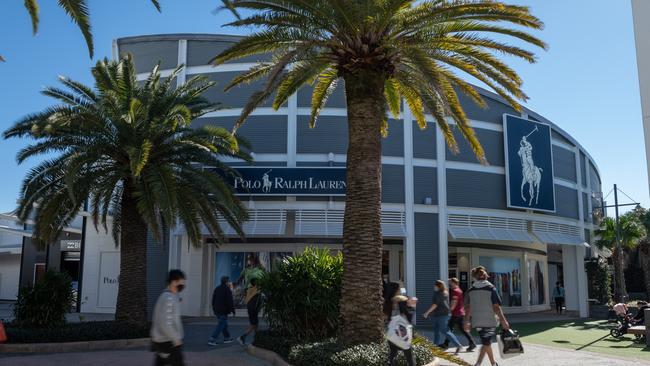Vicinity Centres swoops on slice of Gold Coast’s Harbour Town for $358m
Vicinity Centres’ move on Gold Coast’s Harbour Town shows the strength of the shopping centre market as big ticket sales come back.

Shopping centre giant Vicinity Centres has come through the worst of the coronavirus crisis and has struck a deal to buy a 50 per cent stake in Gold Coast’s Harbour Town outlet shopping centre for $358m.
The transaction is the latest in a run of big ticket retail deals that have been done as the economy reopens and shopping centre values are reset.
Retail values came under pressure as malls were deserted during lockdowns and customers switched to e-commerce, with tenants demanding rental relief.
Some shopping centre owners – like the vendor of the stake, Lendlease’s Australian Prime Property Fund Retail, – also came under pressure to sell as investors wanted to exit.
The deal on the Biggera Waters holding shows that values have held up for outlet centres and Vicinity had flagged this area as one where it would expand, partly diversifying its traditional mall exposure.
Vicinity plans to introduce new brands and enhance rental income and says there is the potential to elevate the centre with more defined outlet, food, convenience and leisure precincts.
Vicinity chief executive Grant Kelley said the move “reflects our strategy to invest in premium retail assets where we can buy well and add value”.
“Harbour Town is located in an attractive trade area and the centre’s annual moving annual turnover is more than double the average MAT for Vicinity’s current outlet portfolio and is expected to grow at more than 3 per cent per annum to 2031,” he said.
The deal shows Vicinity is back buying after a rescue equity raising during the pandemic and selling some small centres.
“We will continue to optimise our asset portfolio by actively considering acquisition opportunities where we can add value as well as divestment opportunities that make strong strategic and economic sense for Vicinity and its security holders,” Mr Kelley said.
The agents handling the sell-off of the Harbour Town holding, CBRE’s Simon Rooney together with McVay Real Estate’s Dan and Sam McVay, noted the strength of the result with the centre selling on a capitalisation rate of 5 per cent.
Outlet centres benefit from a greater trading resilience during downturns than other retail sub-sectors, due to their discount-based offering.
Harbour Town Premium Outlets is one of just 17 outlet centres across the country, and the tightly held sub-sector is scarcely traded with only ten major comparable transactions having occurred in the past decade.
The expansive centre, spread over 22.3ha, was developed by Lewis Land and opened in 1999 as Australia’s first purpose-built outlet shopping centre.
It has Woolworths and Reading Cinemas as anchor tenants, more than 200 other tenants, and parking for in excess of 3000 cars.
Lewis Land, developer of the Sovereign Islands at Paradise Point, retains the remaining 50 per cent of Harbour Town.
The property is Australia’s second largest – and Queensland’s most dominant – outlet centre, and drew both local and global investors keen to acquire immediate scale in the highly sought after area.
Harbour Town Premium Outlets was relatively unaffected by the pandemic and sports a diverse tenancy mix of convenience, fresh food, entertainment, dining, and outlet retail, providing greater resilience and consistent trading.
The site also offers considerable expansion and development potential, including a proposed masterplanned expansion of the centre.
The centre has a total area of 55,225sq m and also has 17 mini majors, 197 specialty tenants, seven kiosks and one pad site currently occupied by McDonalds, with parking for 3,022 vehicles.
Lendlease’s retail fund has been selling down assets to meet redemptions.
Lendlease Funds Management managing director Scott Mosely said when the centre went on the market that APPF Retail was “focused on providing liquidity to our investors who have sought it while continuing to execute on our urban growth centre strategy through precincts that will increasingly see complementary multisector uses”.



